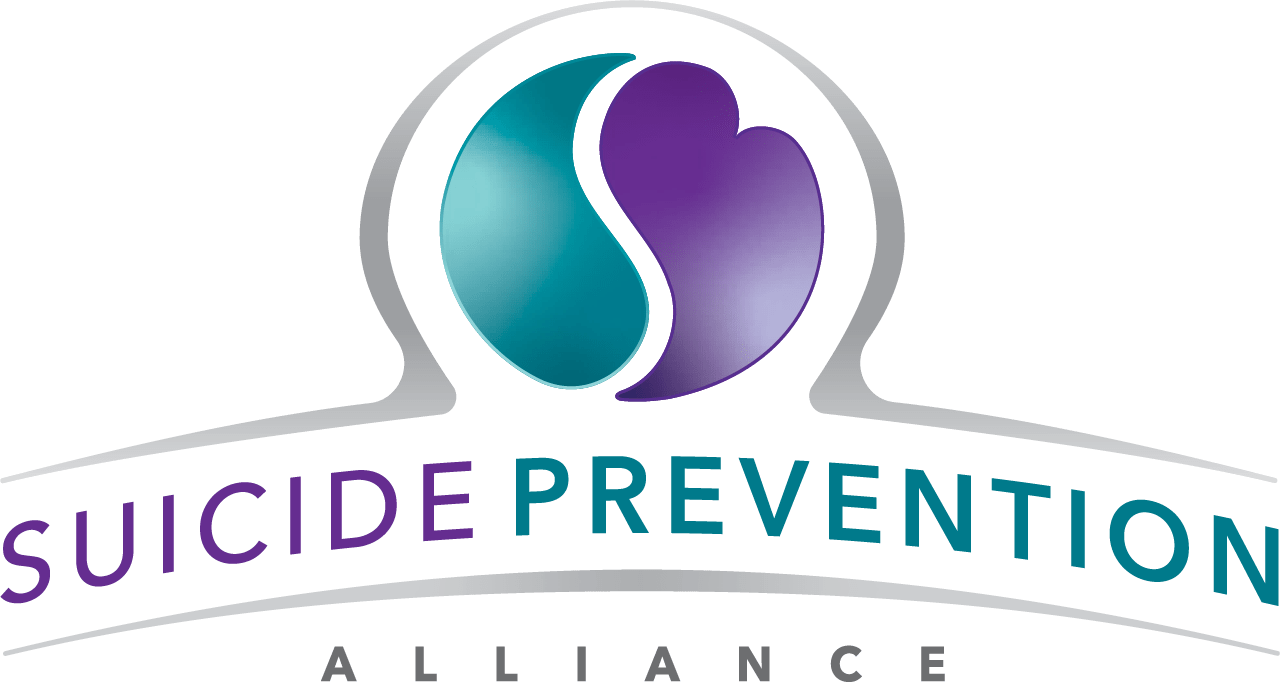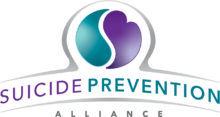How To Get Help
Thinking about suicide or hearing someone say that they are thinking about suicide can be scary, to the person that is contemplating taking their life or to the family member or friend who is trying to help them.
If you or someone you know is thinking about suicide, please follow the below steps to help yourself, a friend, or loved one.
What to do if you are having thoughts of suicide??
People can have thoughts of suicide without having the intent to die by suicide, so the first step is to distinguish between acute suicidality and having passing thoughts about suicide. I’m not going to get into the causes of suicidal ideation, just how to deal with those thoughts of wanting to die.
I’ve been struggling with chronic suicidal ideation all my life. I’ve even attempted suicide. I know sometimes it’s good and they aren’t there, sometimes they’re there but in the background, and sometimes they are right there in the forefront of your mind.
Many people have said that sometimes these intense, suicidal thoughts just come rushing up on you and take you unaware. I know I’ve experienced this myself, when suddenly I had this intense overwhelming urge to kill myself that I’ve described it as wrestling with the devil. What can you do if you feel this way?
First, I want to share Dr. Ursula Whiteside’s Emotional Fire Safety Plan. Dr. Whiteside has done research to show there are 3 things a person can do if they feel they are in that intense pain of being acutely suicidal.
- Shut it down
Sleep, but don’t overdose. Can’t sleep? Then a cold shower or put your face in ice water for 30 seconds and repeat. These things will slow things down. - No important decisions
Most importantly, don’t decide to kill yourself. Don’t panic. Ignore thoughts that want you to die or don’t care if you die. Don’t take any drugs or drink alcohol or stop taking them if you already have - Make eye contact
This can be difficult but it’s a crucial step. This is an intense pain reliever. Find someone with whom you can make eye contact, even if it’s a stranger walking down the street. Ask a friend or acquaintance if they can help you get out of your head. Video chat will work. Don’t give up – keep trying until you find someone.
To learn more about this, visit Now Matters Now
If these things don’t work, call 988, which is the new Suicide and Crisis Lifeline number. The Lifeline provides free and confidential support for people in distress, prevention and crisis resources for you or your loved ones 24/7. There’s a person on the other end who can talk with you and help you. You can also text 988 to the 988 Suicide Prevention and Crisis Lifeline Chat line to get immediate help as well. Finally, if none of these things help, contact your local Crisis Intervention or, if able, take yourself to the local hospital and get help there.
Sometimes the thoughts are there but not as intense. However, if you don’t stop them early, you can easily go down that suicidal rabbit hole and end up acutely suicidal and needing immediate help. So what can you do to deal with those thoughts of wanting to die?
- Distract yourself. Some examples:
- Peel an orange if you have one. This engages your sight, smell, touch, and taste and can help get your thoughts back on track.
- Go for a walk.
- Clean a room or drawer or closet
- Talk about it. Don’t keep it to yourself. Often times just getting it out in the open is enough to decrease the intense pain you’re feeling. Find someone you can trust to talk about your feelings. Certified Peer Support specialists are a great resource in most communities if you feel your family or friends can’t handle it or you don’t want to talk to them about it.
- Challenge your thoughts. If you’re thinking, nobody cares, nobody would miss me, challenge that thought with people in your life who you know love or care about you. Your spouse, parent, grandparent, best friend, cousin, sibling, etc.
- Practice mindfulness, choosing something to pay attention to but not your thoughts of suicide.
- Create a safety plan. It’s best to do this before you’re suicidal so you’ll have it when you’re feeling that way but no matter when you create one, it’s a great tool to use. It’s for you written by you. It has things that you can do to distract yourself, where can you go, who can you call, and what is the one thing that is worth living for.
- Learn your triggers or what causes you to feel suicidal. What starts that avalanche of thoughts? Feeling stupid? Having an argument with someone? Feeling left out?
One of the things that helped me most is learning about cognitive distortions or ways that my thinking gets screwed up. Below are the most common Cognitive Distortions. Recognize any?
- All or Nothing Thinking or everything is black or white, no gray.
- Catatrophizing – turning something into a catastrophe or crisis when in reality, it isn’t one.
- Disqualifying or Discounting the Positive – negating the good things
- Emotional Reasoning – feelings aren’t facts. You may not feel loved, but you know you are loved.
- Labeling – you’re stupid, fat, ugly, etc.
- Magnification or Minimization – making a mountain out of a molehill or shrinking something until it disappears, such as a good quality in yourself.
- Mental Filter/Tunnel Vision – you focus on one thing and one thing only, such as the intense emotional pain you are currently feeling
- Mind Reading – assuming you know what other people are thinking or their reasoning behind their actions
- Overgeneralization – you ALWAYS do this, you NEVER do that
- Personalization – it’s all about me. You think the negative behaviors of others is about you
- Shoulds and Musts
Recognizing when my thinking is screwed up has helped me immensely from spiraling downward. Oh, my thinking is off. OK, I need to re-frame this or put this aside for now until my thinking is back to normal again. Normal is a relative term here.
There are great resources to help you with all of this. Here’s a list of online resources that you can help you now:
- Visit nowmattersnow.org – they have videos of people describing different techniques that can help you with (intense) emotions
- Speaking of Suicide – speakingofsuicide.com – this site has a lot of useful information, especially a section on having a Hope Box - https://www.speakingofsuicide.com/2013/05/16/hope-box/
- Download the Virtual Hope Box from National Center for Telehealth & Technology. This is a great tool to have on your phone. It has sections on Coping Tools, Distract Me, Relax Me, Inspire Me, and Remind Me to help you get out of those thoughts.
- The app Mood Tools Depression Aid is another great tool for helping to keep you on track and not fall down that rabbit hole.
- There’s a safety plan app from the MY3 Support Network that you download if you don’t want to remember to keep a physical copy with you at all times.
Finally, remember that feelings aren’t facts, and they pass if you let them. I may be having thoughts of suicide, but it doesn’t necessarily mean I want to die. Just because I’m feeling this way doesn’t mean I have to act upon it, I can do something to make the thoughts go away. It can be self-soothing to think about suicide when it seems like everything is wrong in your world or life, but there are more effective, safer coping strategies you can learn so you don’t have to keep struggling with these thoughts.
Written by National Board Advisor Heidi Bryan
Call 988 or text 988 to the Suicide and Crisis Lifeline or
Text 741741 to the Crisis Text Line
For immediate help, anytime, day or night!
The 988 Suicide & Crisis Lifeline is a national network of local crisis centers that provides free and confidential emotional support to people in suicidal crisis or emotional distress 24 hours a day, 7 days a week in the United States. We're committed to improving crisis services and advancing suicide prevention by empowering individuals, advancing professional best practices, and building awareness. You can also text 988 to connect the Suicide and Crisis Chat line if you are more comfortable texting. For more information about the lifeline, click here.
You can also contact the Crisis Text Line and text 741741 from anywhere in the United States, anytime, for any crisis that you are going through. A live, trained Crisis Counselor receives the text and responds, all from a secure online platform. The Crisis Counselor is a trained volunteer, not a professional, which can provide support, but not medical advice.
What to do if you think someone is having thoughts of suicide: Here are some tips according to the Mayo Clinic.
Safety Plan
A safety plan is a written list of personalized coping strategies and resources that you can use to help yourself when you are having thoughts of suicide. This is a way to develop a plan of action to challenge your thoughts of suicide and help you to develop tools to keep you alive and create a life worth living.

Additional Information
Who We Are
Suicide Prevention Alliance is a 501(c)3 nonprofit organization that helps people who are in need of preventative suicide assistance
